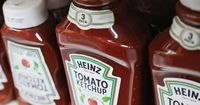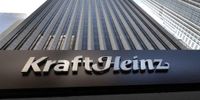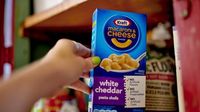After a decade of operating as one of the world’s largest packaged food companies, Kraft Heinz announced on September 2, 2025, that it will split into two separate publicly traded companies. The move, reversing the $46 billion megamerger that united Kraft and Heinz in 2015, marks a dramatic shift in strategy for the food giant and signals a broader transformation within the U.S. food industry.
The decision, revealed in a statement on Tuesday, will see Kraft Heinz’s portfolio divided along lines of growth and consumer appeal. One of the new companies will take charge of faster-growing businesses, including iconic brands such as Heinz ketchup, Philadelphia cream cheese, and Kraft Mac & Cheese. The other will focus on the company’s slower-growing grocery staples, among them Oscar Mayer hot dogs, Kraft Singles, and Lunchables. As of now, the new companies have yet to be named, but they are expected to begin operating independently in the second half of 2026, according to Kraft Heinz (CNN).
The split is being orchestrated with Centerview Partners as the sole financial adviser, a notable detail since Centerview also advised on the original merger over a decade ago (Bloomberg). The company says the separation will occur via a tax-free spinoff, and the headquarters will remain in Pittsburgh and Chicago (Transport Topics).
“Kraft Heinz’s brands are iconic and beloved, but the complexity of our current structure makes it challenging to allocate capital effectively, prioritize initiatives and drive scale in our most promising areas,” said Miguel Patricio, the executive chair of Kraft Heinz, in a statement quoted by CNN. “By separating into two companies, we can allocate the right level of attention and resources to unlock the potential of each brand to drive better performance and the creation of long-term shareholder value.”
The numbers behind the split are striking. The soon-to-be-separated condiments and boxed meals division, home to products like Heinz ketchup and Kraft Mac & Cheese, currently generates $15.4 billion in sales annually. The grocery products company, which will include Oscar Mayer and Lunchables, brings in about $10.4 billion (Transport Topics).
The breakup comes amid mounting challenges for Kraft Heinz and the wider packaged food sector. Since the pandemic, the industry has faced sharp declines in sales as inflation-weary consumers cut back on spending or opt for generic brands. Kraft Heinz’s own sales dropped 1.9% in the most recent quarter, marking the company’s seventh consecutive quarter of decline (CNN). Shares of Kraft Heinz have tumbled more than 68% since the 2015 merger, and the stock fell another 6.4% to $26.20 on the day of the announcement (The New York Times).
“The legacy of Kraft Heinz when 3G and Berkshire Hathaway put the company together was this synergy story, that they were going to rip out a bunch of costs,” Peter Galbo, an analyst at Bank of America, told CNN. “(But) the bigger question for Kraft over time has always been, did they really invest enough money in the business?”
Indeed, the merger—engineered by Warren Buffett’s Berkshire Hathaway and 3G Capital—was billed as a way to create efficiencies and boost profits by combining two of the most recognizable names in American groceries. But as consumer tastes shifted toward healthier and less-processed foods, the company struggled to keep up. Many of its staple brands, such as Kraft Mac & Cheese, Lunchables, and Velveeta, have fallen out of favor among shoppers seeking organic or fresh options.
Warren Buffett, whose Berkshire Hathaway remains the largest shareholder, expressed disappointment about the breakup on September 2, 2025, but told CNBC he would not attempt to block the split (CNN). Buffett had previously acknowledged in 2019 that Berkshire “overpaid for Kraft” after the company was forced to write down $15 billion in the value of its Kraft and Oscar Mayer brands. By the end of 2023, 3G Capital had quietly sold its entire stake in the company.
The split also comes as Kraft Heinz responds to mounting regulatory and consumer pressure. U.S. Department of Health and Human Services Secretary Robert F. Kennedy Jr. has called for the removal of artificial flavors and additives from processed foods. In June 2025, Kraft Heinz announced it would remove all artificial colors from its brands (CNN, Transport Topics).
Kraft Heinz CEO Carlos Abrams-Rivera, who will become the CEO of the grocery company after the spinoff, described the move as an opportunity to “unleash the power of our brands and unlock the potential of our business” (Transport Topics). The company is currently working with a recruiting firm to find a chief executive for the second company, temporarily dubbed the “global taste elevation company.” John Cahill, the board’s vice chair and former CEO of Kraft Foods Group, will oversee the separation.
The industry context is just as important as the internal dynamics. The Kraft Heinz breakup follows a wave of similar moves in the food and beverage sector. In 2023, Kellogg split its snacking and cereal businesses, with Kellanova (owner of Pringles and Cheez-It) and WK Kellogg Co. (cereal brands like Froot Loops and Frosted Flakes) now on track to be acquired by larger conglomerates. Mars Inc. agreed to buy Kellanova for nearly $36 billion in August 2024, and Ferrero International SA purchased WK Kellogg for $3.1 billion in July (Transport Topics).
Other food giants, such as Keurig Dr Pepper, have also begun to unwind previous mergers in hopes of unlocking value and responding to changing consumer preferences. Even PepsiCo has come under pressure from activist investors to review its structure and clarify its strategic direction (The New York Times).
For Kraft Heinz, the hope is that by splitting up, each business can focus on what it does best. The faster-growing condiments and meals unit can invest in innovation and marketing to capture shifting consumer tastes, while the grocery business can streamline operations and adapt to a more challenging retail environment.
Still, investors remain cautious. The cost of the split, the challenge of reviving lagging brands, and the broader decline in processed food consumption all weigh heavily on the outlook. As one analyst put it, Kraft Heinz “has suffered in just about all of its categories” because it failed to keep up with what consumers want (CNN).
The road ahead is uncertain, but the breakup of Kraft Heinz is a sign of the times—an industry giant adapting, perhaps belatedly, to a market that no longer rewards size alone. Whether the new companies will thrive remains to be seen, but for now, the era of the megamerger is over, and a new chapter is about to begin for some of America’s most storied food brands.


